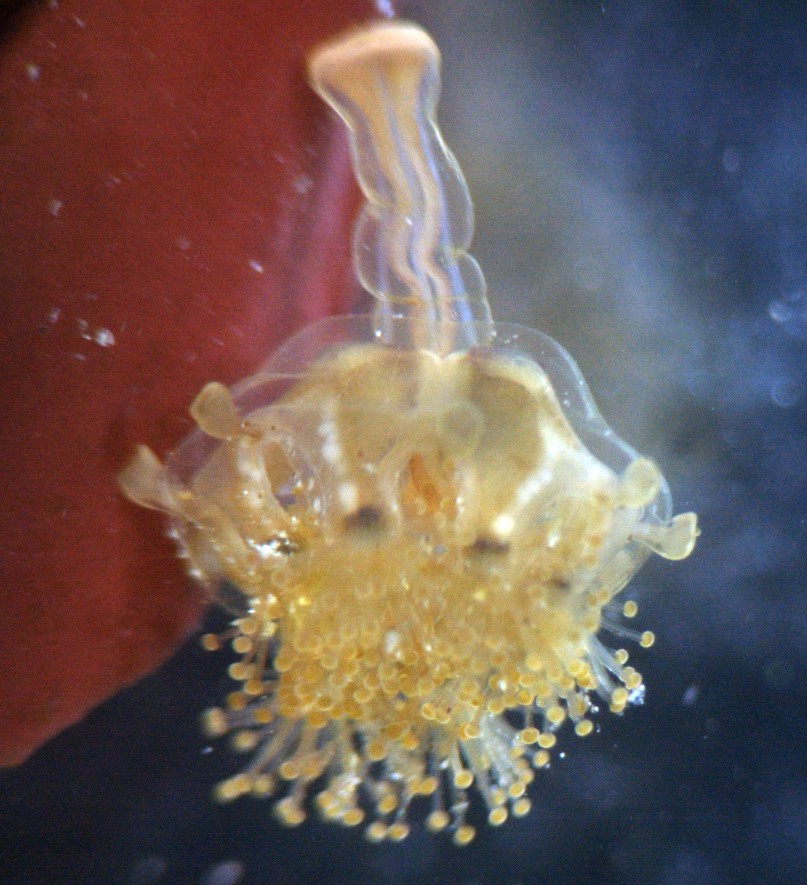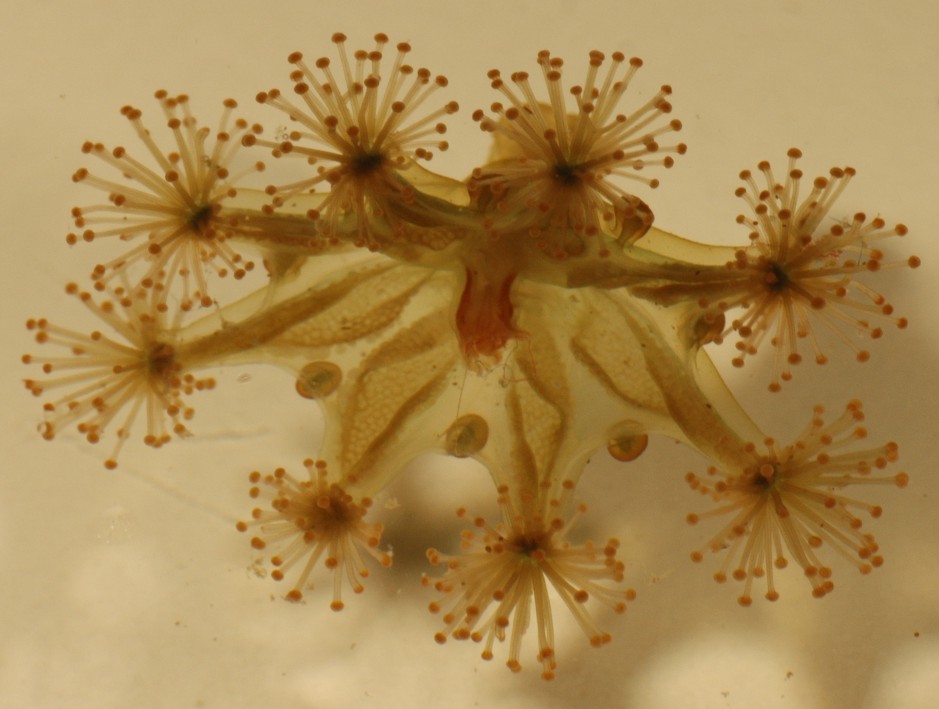Haliclystus salpinx (Clark, 1863)Common name: Stalked jellyfish |
|
| Synonyms:
Haliclystus octoradiatus |
 |
| Phylum Cnidaria
Class Scyphozoa Order Stauromedusae Family Lucernariidae |
|
| A possible Haliclystus salpinx, diameter about 1.5 cm. Found in Rosario Bay. Note trumpet-shaped anchors. | |
| Photo by: Dave Cowles, August 2012 | |
How to Distinguish from Similar Species: Haliclystus sp. has marginal anchors which are egg-shaped or trumpet-shaped, not expanding into broad cups, and with inconspicuous stalks. Its gonads also nearly reach the ends of the lobes.
Note: H. salpinx is
primarily in
the North Atlantic.
Records of the species in this area are very sparse and mostly in the
San
Juan Islands. It may be that what is locally identified as H.
salpinx is actually an unnamed species (Claudia Mills
personal communication).
Geographical Range: North and South Atlantic; North Pacific from central California to Alaska, northern Japan and China (but see note above)
Depth Range: Found on a variety of intertidal and subtidal habitats, sometimes quite abundant.
Habitat: Found commonly on eelgrass, rock, and algae.
Biology/Natural
History: The color of H.
salpinx often matches the color of their substrate (typically
rock,
algae, or eelgrass). They feed on small epibenthic
crustaceans.
| Return to: | |||
| Main Page | Alphabetic Index | Systematic Index | Glossary |
References:
Dichotomous Keys:
Carlton, 2007
Kozloff, 1987, 1996
General References:
Wrobel
and Mills, 1998
Scientific
Articles:
Web Pages:
Claudia Mills web page: http://faculty.washington.edu/cemills/Staurolist.html
General Notes and Observations: Locations, abundances, unusual behaviors, etc.:
Larson(1990) assigned the name H. octoradiatus to the common Haliclystus along the west coast, whereas a Japanese specialist is planning to revivie the name H. sanjuanensis for individuals in Washington and British Columbia. H. salpinx is clearly another species, of limited distribution in the San Jaun Islands, and H. stejnegeri is a boreal species that occurs from Alaska to northern Japan.
This species is found at least once a summer on algae in Rosario bay--especially by the phycology class.

In this view the marginal anchors, as well as the open manubrium
can be clearly seen. Photo by Dave Cowles, June
2005. Note:
This may be another species of Haliclystus.
Authors and Editors of Page:
Christina Smith (2002): Created original page
Edited by Hans Helmstetler 12-2002, Dave Cowles 2005